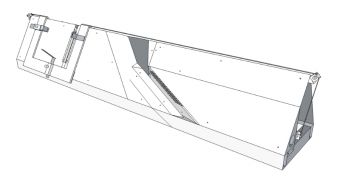Even before the idea of electronic books gained traction, people were using scanners for all sorts of things. Google is now hoping to tackle one of the most frustrating tasks of the past few years: book scanning.
Making electronic copies of contemporary books is easy, since most of them are written in PC documents in the first place.
Older titles, though, are tricky, and unless someone agrees to spend ages typing their text in e-documents, scanning them is the only way to go.
So far, though, publishers that agreed to make e-book copies of their paper books have had to hire people to spend hours turning pages and scanning each one, or each pair, individually. Even cutting the cover and bindings is only marginally better.
Needless to say, this has worked against the dream of the online “Library of Alexandria.”
Now, Google claims to have found the solution: an automated scanner that can take a book and turn its pages on its own.
The means to do so is amusingly queer. The Linear Book Scanner is composed of a vacuum cleaner part, a sheet metal structure, and two image sensors used normally in a desktop scanner.
“The device moves a book face-down over linear sensors to capture page images, and uses vacuum pressure to turn pages automatically as the book moves,” Google explains.
The BOM (bill of materials) is $1500, which isn't really all that much for well-established publishers. It gets better though. Apparently, the reason for the cost is the rather expensive scanner used, and it should be a simple enough matter to replace it with a cheaper one, or some parts from a flatbed scanner.
Finally, the best part is that this is a DIY invention (do-it-yourself), meaning that Google doesn't even have to build it. After getting the plan (available here), people can just put the device together themselves. More information, as well as a link to the document and necessary software, can be found here.

 14 DAY TRIAL //
14 DAY TRIAL // 